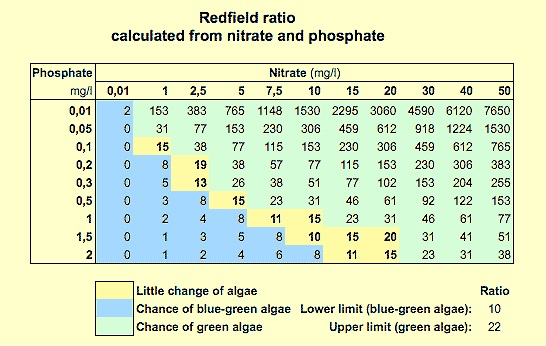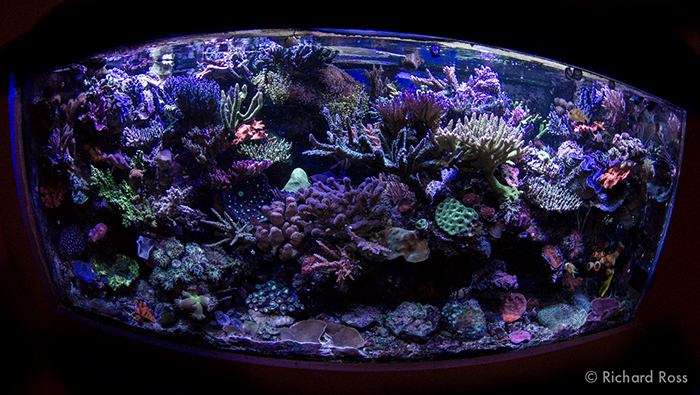This is how I understand the Redfield Ratio with regards to nitrates and phosphates and how it relates to creating conditions for algae growth. Please chime in and let me know if my thinking is correct.
If phosphates are high and nitrates are low, the low nitrates will limit the amount of phosphates being taken up by marine organisms (16:1 N to P) which will result in phosphates slowly building up in the water column over time. According to the chart, this favors an environment favorable for blue green algae and cyano.
If nitrates are high and phosphates are low, the low phosphates will limit the amount of nitrates being taken up by marine organisms (16:1 N to P) which will result in nitrates slowly building up in the water column over time. According to the chart, this favors an environment favorable for green algae and diatoms also I believe.
Correct right? This confuses me somewhat because we have always been taught in this hobby, and freshwater for that matter, that high phosphates are the reason for algae growing in your tank, mainly stuff like GHA, bryopsis and what not. Yet if my view of the Redfield Ratio is correct, it works the other way around, with excess nitrates more likely to fuel green algae while excess phosphates are more related to cyano.
Also, if this is how algae growth works, couldn’t we just fix all algae problems in a reef tank without the use of chemicals by just dosing nitrates or phosphates like this guy did?

If phosphates are high and nitrates are low, the low nitrates will limit the amount of phosphates being taken up by marine organisms (16:1 N to P) which will result in phosphates slowly building up in the water column over time. According to the chart, this favors an environment favorable for blue green algae and cyano.
If nitrates are high and phosphates are low, the low phosphates will limit the amount of nitrates being taken up by marine organisms (16:1 N to P) which will result in nitrates slowly building up in the water column over time. According to the chart, this favors an environment favorable for green algae and diatoms also I believe.
Correct right? This confuses me somewhat because we have always been taught in this hobby, and freshwater for that matter, that high phosphates are the reason for algae growing in your tank, mainly stuff like GHA, bryopsis and what not. Yet if my view of the Redfield Ratio is correct, it works the other way around, with excess nitrates more likely to fuel green algae while excess phosphates are more related to cyano.
Also, if this is how algae growth works, couldn’t we just fix all algae problems in a reef tank without the use of chemicals by just dosing nitrates or phosphates like this guy did?


















